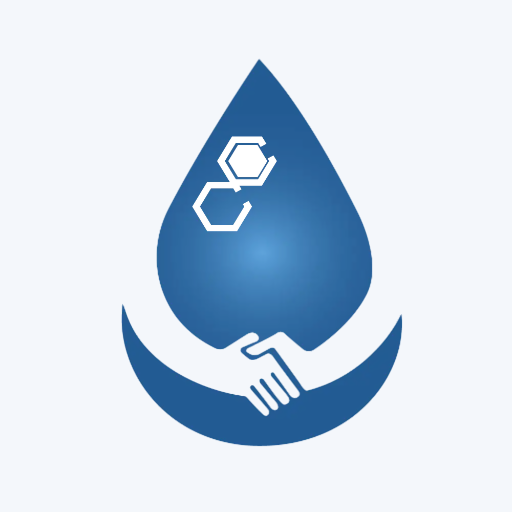
Sodium cyanide (NaCN) is a chemical compound with high toxicity and wide applications in various industries, such as gold extraction in mining, electroplating, and chemical synthesis. Given its extreme toxicity, strict quality and Safety standards must be adhered to throughout all stages involving Sodium cyanide, including production, storage, transportation, and use. This article will explore in detail the product quality and safety standards of Sodium Cyanide.
I. Product Quality Standards
1. Purity Requirements
Industrial - Grade Solid Sodium Cyanide: According to relevant national and international standards (such as the standard in China), the purity of solid sodium cyanide for industrial use has different grades. For example, the content of the top - grade product should reach 98.0% or higher, while that of the qualified product should be at least 87.0%. High - purity sodium cyanide is crucial for industries like gold extraction. In the gold - mining process, higher - purity sodium cyanide can more effectively react with gold - containing ores, improving the extraction rate and reducing unnecessary impurities in the subsequent separation process.
Industrial - Grade Sodium Cyanide Solution: For sodium cyanide solutions, the concentration also needs to meet specific standards. Usually, the concentration of sodium cyanide in the solution is clearly defined according to different application scenarios. The solution should be a clear, colorless or slightly yellow aqueous solution without visible impurities.
2. Impurity Control
Inorganic Impurities:
Carbonate Content: The content of sodium carbonate in sodium cyanide is strictly controlled. In solid sodium cyanide, the content of sodium carbonate in different grades is regulated. For example, in the top - grade product, it should be no more than 0.5%, in the first - class product, no more than 2.0%, and in the qualified product, no more than 3.0%. Excessive carbonate can affect the reaction efficiency in some chemical processes. For instance, in electroplating, it may interfere with the deposition of metal ions, resulting in an uneven electroplated layer.
Hydroxide Content: The content of sodium hydroxide also has corresponding limits. In solid sodium cyanide, the content of sodium hydroxide in different grades varies. For example, in the top - grade product, it should be no more than 0.5%, in the first - class product, no more than 1.0%, and in the qualified product, no more than 1.5%. High levels of sodium hydroxide can change the pH value of the reaction system, which is not conducive to the normal progress of some reactions that require a specific pH range.
Organic Impurities: Organic impurities such as formate need to be strictly controlled. Although the allowable content is relatively low, excessive formate can interfere with some chemical reactions. For example, in certain organic synthesis reactions, formate may participate in side reactions, reducing the yield and purity of the target product.
3. Physical Properties
Solid Sodium Cyanide: Solid sodium cyanide should be in the form of white or slightly colored lumps or crystalline particles. Its appearance is an important indicator of product quality. Deviations in color or particle form may indicate problems such as contamination or improper production processes.
Sodium Cyanide Solution: The solution should be transparent, free of turbidity or precipitation. Turbidity or precipitation may be a sign of chemical reactions in the solution, such as the formation of insoluble salts due to the reaction with impurities in the air or container materials, which will affect the performance of the solution in practical applications.
II. Safety Standards
1. Regulatory Compliance
National and International Regulations:
In the United States: The Occupational Safety and Health Administration (OSHA) has set strict standards regarding the exposure limits and safety procedures for handling cyanides. For example, the permissible exposure limit for airborne cyanide in workplace air is set to protect workers from over - exposure.
In the European Union: The REACH (Registration, Evaluation, Authorization and Restriction of Chemicals) regulation governs the safe use of hazardous substances like sodium cyanide. It requires companies to register and provide detailed information on the properties, uses, and safety measures related to sodium cyanide.
In China: The "Regulations on the Safety Management of Hazardous Chemicals" impose strict controls on all aspects of sodium cyanide handling, including production, storage, transportation, and use. Enterprises must comply with these regulations to ensure the safety of personnel and the environment.
Permits and Licensing: All entities involved in the production, storage, transportation, or use of sodium cyanide are required to obtain the necessary permits and licenses in accordance with local regulations. These permits are issued based on strict inspections of facilities and operations to ensure they meet the required safety and environmental protection standards.
2. Safety Precautions in Different Stages
Storage:
Location Selection: Sodium cyanide should be stored in a dedicated, well - ventilated, and cool storage area. The storage location should be far away from sources of heat, ignition, and incompatible substances. It should also be in an area that is not easily accessible to unauthorized personnel. For example, storing sodium cyanide near acids is extremely dangerous because it can generate highly toxic and flammable hydrogen cyanide gas.
Container Requirements: Appropriate corrosion - resistant and tightly sealed containers are used. For solid sodium cyanide, thick - walled metal drums or plastic containers with secure lids are commonly used. For sodium cyanide solutions, storage tanks should be made of materials resistant to alkaline corrosion, such as certain grades of stainless steel or specialized plastic - lined tanks. All containers must be clearly labeled with "poison" and "sodium cyanide," along with relevant hazard symbols.
Storage Conditions: The storage area should be kept dry, as moisture can accelerate the degradation of sodium cyanide and increase the risk of hydrogen cyanide gas generation. The relative humidity in the storage area should generally be kept below 80%. Good ventilation is also essential to prevent the accumulation of any potentially leaked gases.
Transportation:
Packaging: The packaging for transporting sodium cyanide must meet strict standards. The outer packaging should be robust enough to withstand normal handling during transportation and protect the inner container from damage. Inner containers should be leak - proof and securely sealed. The packaging must also be clearly labeled with the name of the chemical, hazard warnings, and emergency contact information.
Transport Vehicles: Specialized transport vehicles designed for carrying hazardous chemicals are used. These vehicles should be equipped with spill - containment systems, emergency response equipment, and proper ventilation. They should also display the appropriate hazard warning signs as required by transportation regulations.
Driver Training: Drivers transporting sodium cyanide must be specially trained in handling hazardous materials. They should be familiar with the properties of sodium cyanide, emergency response procedures in case of a spill or accident, and the relevant transportation regulations.
Route Planning: The transportation route should be planned in advance to avoid congested areas, residential zones, and areas with a high risk of accidents. Local authorities should be notified about the transportation of sodium cyanide, especially when passing through sensitive areas.
Handling and Use:
Personal Protective Equipment (PPE):
Respiratory Protection: Operators must wear appropriate respiratory protection. In normal situations, a full - face respirator with a high - efficiency particulate air filter and an approved canister for cyanide protection is required. In high - risk areas or in case of potential large - scale exposure, self - contained breathing apparatus may be necessary.
Eye Protection: Chemical - resistant goggles or a face shield should be worn to protect the eyes from splashes or dust particles of sodium cyanide.
Skin Protection: Impervious gloves made of materials like butyl rubber or nitrile, along with chemical - resistant coveralls or aprons, should be used. It is crucial to ensure that the PPE is in good condition and fits properly.
Work Area Setup:
Ventilation: The work area where sodium cyanide is handled should have excellent ventilation. Local exhaust ventilation systems should be installed to capture any fumes or dust generated during handling. This helps to reduce the concentration of harmful substances in the air and protect the health of workers.
Emergency Response Equipment: The work area should be equipped with emergency response equipment such as eyewash stations and safety showers. In case of accidental contact with sodium cyanide, workers can quickly rinse the affected area to minimize the harm.
3. Emergency Response and Disposal
Emergency Plans: Enterprises handling sodium cyanide must develop comprehensive emergency plans. These plans should include procedures for dealing with spills, leaks, fires, and accidental exposures. Regular emergency drills should be carried out to ensure that employees are familiar with the response procedures.
Spill and Leak Response: In the event of a sodium cyanide spill or leak, immediate action is required. The area should be cordoned off, and unauthorized personnel should be evacuated. Trained personnel wearing appropriate PPE should use absorbent materials to contain the spill. The spilled sodium cyanide should be collected and properly disposed of according to relevant regulations.
Fire Response: Since sodium cyanide can produce highly toxic hydrogen cyanide gas when exposed to fire, firefighters should be equipped with appropriate respiratory protection and fire - fighting equipment. Water, sand, or dry - powder fire extinguishers can be used to extinguish fires, but care should be taken to prevent the spread of toxic substances.
Waste Disposal: Waste containing sodium cyanide must be disposed of properly. It should not be released into the environment without treatment. Treatment methods may include chemical oxidation or other approved processes to convert the toxic cyanide into less harmful substances before disposal.
In conclusion, the product quality and safety standards of sodium cyanide are of utmost importance to ensure the safe and efficient operation of industries that use this highly toxic chemical. By strictly complying with these standards, we can protect human health, the environment, and the normal progress of industrial production.
- Random Content
- Hot content
- Hot review content
- Antimonium Tartrate Potassium
- Hydrogen Peroxide
- Cupric Chloride 98%
- Adipic acid 99% used as the material of nylon 66
- Food Additive E330 Citric acid monohydrate
- Industrial Sodium Nitrite 98.5%
- Sodium Dimethyldithiocarbamate 95% solid, 40% liquid
- 1Discounted Sodium Cyanide (CAS: 143-33-9) for Mining - High Quality & Competitive Pricing
- 2China's New Regulations on Sodium Cyanide Exports and Guidance for International Buyers
- 3Sodium Cyanide 98% CAS 143-33-9 gold dressing agent Essential for Mining and Chemical Industries
- 4International Cyanide(Sodium cyanide) Management Code - Gold Mine Acceptance Standards
- 5China factory Sulfuric Acid 98%
- 6Anhydrous Oxalic acid 99.6% Industrial Grade
- 7Oxalic acid for mining 99.6%
- 1High Quality 99% Purity of Cyanuric chloride ISO 9001:2005 REACH Verified Producer
- 2Sodium Cyanide 98% CAS 143-33-9 gold dressing agent Essential for Mining and Chemical Industries
- 3 High-Quality Sodium Cyanide for Leaching
- 4Powdery emulsion explosive
- 5Industry Grade Electron grade 98% Sulfuric Acid H2SO4 Sulphuric Acid Battery Acid Industrial Sulfuric Acid
- 6Colloidal emulsion explosive
- 7sodium hydrosulfide 70% flakes used Mining Industry










Online message consultation
Add comment: